Incredible Natural Makeup Removers Made with Aloe Vera
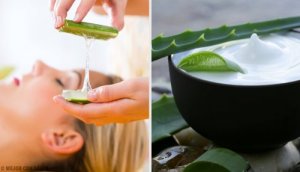

Written and verified by the doctor Karla Henríquez
Did you know that aloe vera is one of the best natural makeup removers? Aloe vera is a medicinal plant that contains lots of nutritional benefits. Every part of this plant is used for a different purpose, for both internal and external applications.
Aloe vera contains more than 200 active compounds, including vitamins, enzymes, minerals, essential fatty acids, and amino acids. The thick leaves contain a gelatinous substance that’s made up of 99% water.
The benefits of aloe vera
- Aloe is rich in vitamins and minerals. It contains vitamins A, C, E, folic acid, choline, B1, B2, B3, and B6. It also contains vitamin B12.
- Aloe also packs up to 20 minerals, including calcium, iron, and magnesium.
- In addition, it contains 18 to 20 amino acids. These are the building blocks of your body’s proteins.
- It may help you lose weight since it aids digestion naturally.
- Thanks to its alkaline properties, aloe vera helps balance the acid levels in your body.
- When applied to the skin, it can reduce pain, irritation, or burning sensations.
- It’s good for your immune system since it may improve the function of white blood cells, which help you fight off different diseases.
- Plus, it has benefits for your cardiovascular and circulatory systems, it provides oxygen to your bloodstream, and it may help lower cholesterol levels.
- Aloe’s cleansing properties favor intestinal function when it comes to eliminating the body’s waste products.
- It contains amino acids and essential fatty acids that lower any lipid content in the bloodstream.
Aloe vera has so many properties that can be harnessed for your health. In today’s article, however, we want to focus on its use for your skin as a makeup remover.
Visit this article: 9 Medicinal Benefits of Aloe Vera
The properties of aloe vera for your skin
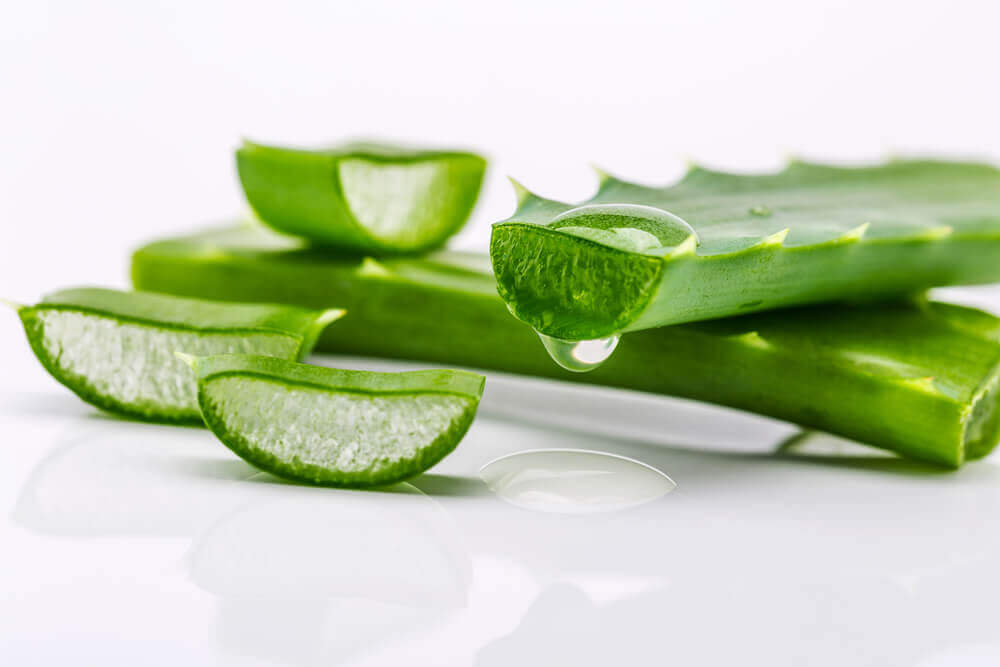
Most of the beneficial properties of aloe reside in the gelatinous pulp inside the leaves:
- It has regenerative, antiseptic, and healing powers. This provides both nutritional and healing benefits.
- Aloe is very good for irritation, sunburn, and rashes, removing dead skin cells and helping the layers of your skin recover.
- It’s effective for all types of injuries, both internal and external. It can also reduce the appearance of acne scars.
- Aloe is rejuvenating and may increase the production of fibroblast cells, which reside in your dermis and form collagen.
- It’s both soothing and anti-inflammatory.
- Because the gel penetrates deep into your epidermis, dermis, and hypodermis, it’s ideal for all skin types – particularly people who suffer from dryness or irritation.
- Aloe cleanses your pores and eliminates oils, so it’s also great for people who tend to suffer from acne.
- It fights loose skin, blemishes, and wrinkles.
- Aloe absorbs any toxins that may be derived from materials like PVC, paint, enamel, and more.
Advantages of masks that are made with aloe vera
As you can imagine, aloe masks are extremely beneficial for your skin. Here’s why:
- They aid in the removal of dead skin cells.
- Aloe masks act as a natural toner.
- They’re an excellent solution for people with dry skin.
- These masks add softness to the face with natural hydration.
- They promote a healthy appearance with s natural glow.
How to remove your makeup with this plant
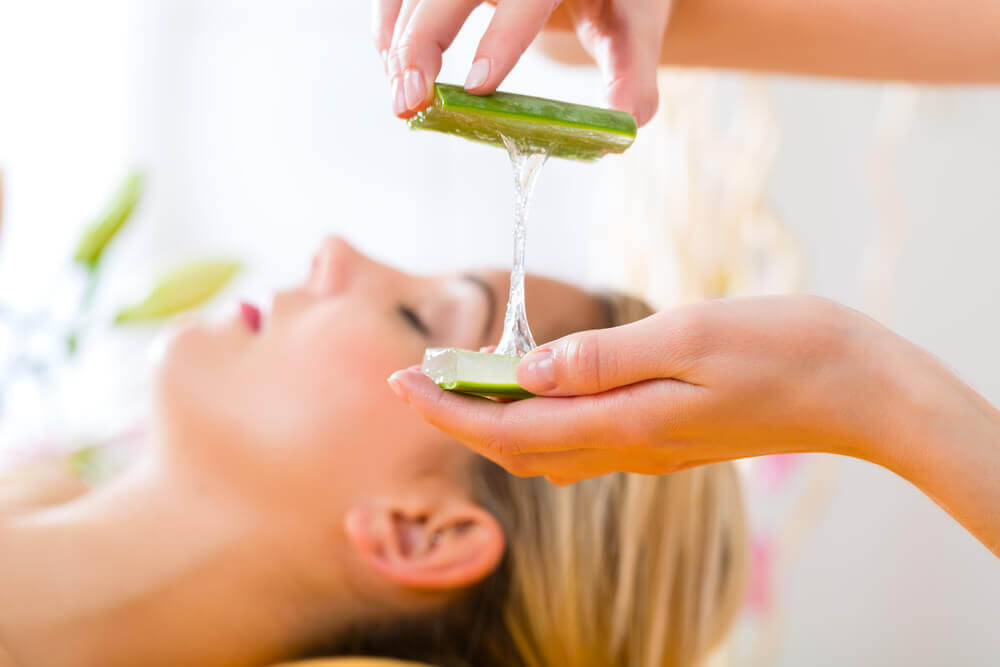
- You can prepare makeup removers with aloe that will make your skin look great.
- You can also prepare moist aloe wipes for removing makeup.
We recommend you read: 7 Ways to Look Good with no Makeup
1. Natural makeup remover with aloe vera and olive oil
Olive oil is ideal for removing makeup from around the eyes (even mascara). In addition to that, it’s an excellent moisturizer. Olive oil has regenerative properties that may increase your collagen production and slow the formation of wrinkles and fine lines.
Ingredients
- 2 tablespoons of aloe vera (30 g)
- 1 tablespoon of olive oil (16 g)
Utensils
- 1 cotton pad
Preparation
- Combine both ingredients in a small bowl.
- Dip the cotton pad in this mixture and apply it carefully to the area around the eyes.
- Remove your makeup gently, without rubbing.
- In more delicate areas, such as the eyelashes, use a little more cotton to facilitate removal.
2. Makeup remover made with aloe vera, oil, and honey
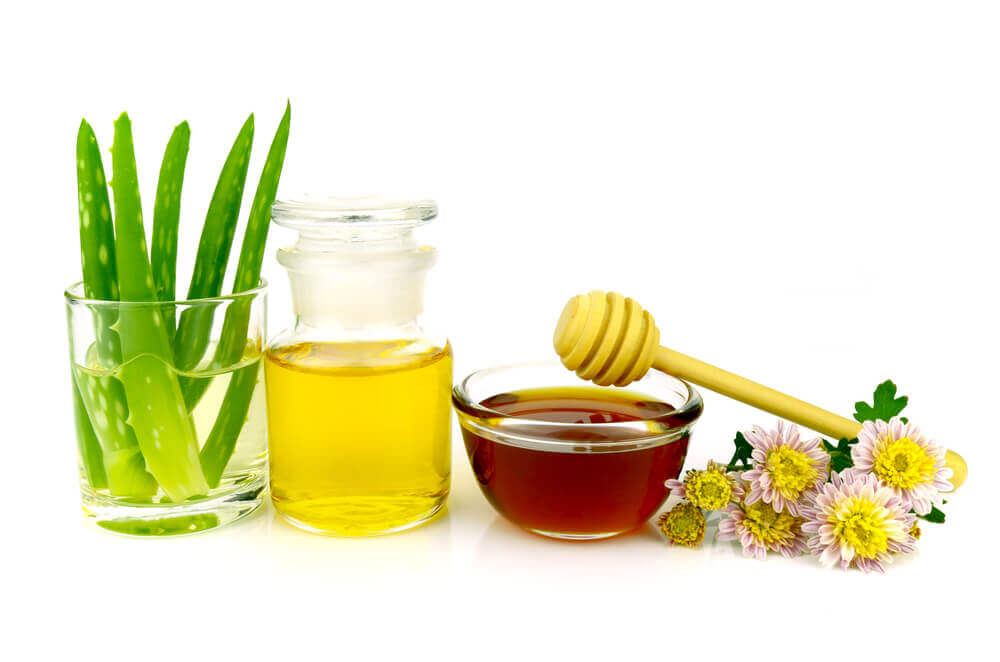
- 1/4 cup of aloe vera (50 g)
- 1/4 cup of honey (84 g)
- 1 tablespoon of oil (your choice: extra virgin olive oil, jojoba, almond, avocado, apricot, argan, or coconut) (15 g)
Utensils
- An airtight container for storage.
Preparation
- Combine the ingredients until they’re well mixed.
- Store this makeup remover at room temperature and it will last for several months.
- To use it, take a tablespoon-full and apply it to your face. Leave it on for one minute.
- Finally, wipe your face clean with a damp washcloth.
3. Prepare moist wipes
These wipes will only contain aloe vera and oil.
Ingredients
- 1/2 cup of high-quality oil (extra virgin olive oil, almond, avocado, apricot, argan, coconut, or jojoba) (100 g)
- 1 1/2 cups of aloe vera (300 g)
Utensils
- 1 400 ml (2 cups) jar or bottle with an airtight lid
- 1 pack of cotton facial wipes
Preparation
- Add the ingredients to the container.
- You can either choose a glass bottle or a plastic bottle that you can squeeze.
- Shake the container well for a few seconds.
- Store this mixture in the refrigerator when you’re not using it.
Application
- Apply the mixture to a wipe and use it to remove any makeup from your face.
- If you need an additional wipe, repeat this process until all traces are gone.
- Remember to shake the mixture well before each application.
4. Natural face wash using aloe vera and almond oil
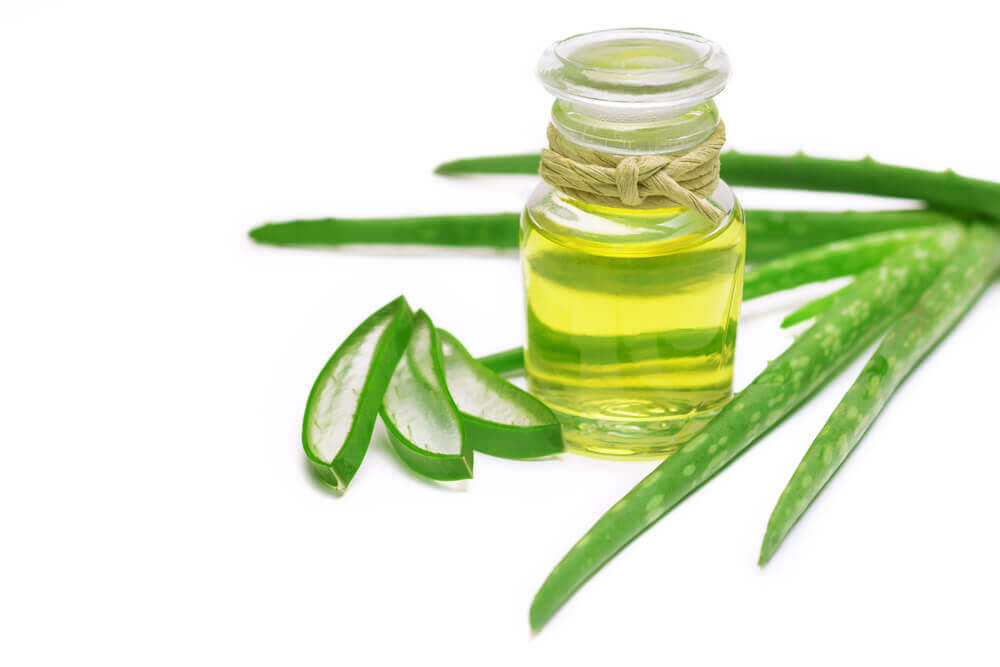
- 5 tablespoons of aloe vera (commercial or fresh) (75 g)
- 1 tablespoon of almond oil (15 g)
- 1 tablespoon of natural liquid soap (10 ml)
Preparation
- Mix the ingredients together very well.
- Moisten your face with warm water and perform a small circular massage to open your pores.
- Dry your face very gently.
- Apply this cleanser to your face and neck using a cotton pad.
- Remove with warm water.
5. Homemade scrub with aloe vera and baking soda
Ingredients
- 3 tablespoons of aloe (45 g)
- 1 teaspoon of baking soda (5 g)
Preparation
- Add the ingredients to a bowl and mix until you get a paste.
- Apply this to your face and neck using a gentle circular massage.
- Repeat once or twice a week, depending on whether you have dry or oily skin.
All cited sources were thoroughly reviewed by our team to ensure their quality, reliability, currency, and validity. The bibliography of this article was considered reliable and of academic or scientific accuracy.
-
Hu, Y., Xu, J., & Hu, Q. (2003). Evaluation of Antioxidant Potential of Aloe vera (Aloe barbadensis Miller) Extracts. Journal of Agricultural and Food Chemistry. https://doi.org/10.1021/jf034255i
-
Reynolds, T., & Dweck, A. C. (1999). Aloe vera leaf gel: A review update. Journal of Ethnopharmacology. https://doi.org/10.1016/S0378-8741(99)00085-9
-
Dal’Belo, S. E., Rigo Gaspar, L., & Maia Campos, P. M. B. G. (2006). Moisturizing effect of cosmetic formulations containing Aloe vera extract in different concentrations assessed by skin bioengineering techniques. Skin Research and Technology. https://doi.org/10.1111/j.0909-752X.2006.00155.x
This text is provided for informational purposes only and does not replace consultation with a professional. If in doubt, consult your specialist.








